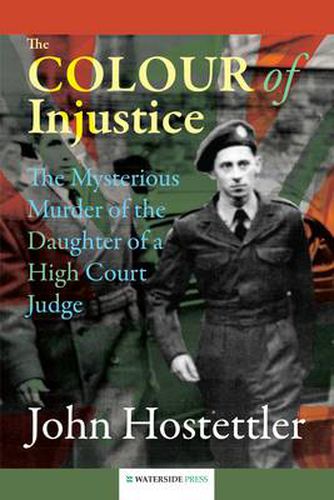Readings Newsletter
Become a Readings Member to make your shopping experience even easier.
Sign in or sign up for free!
You’re not far away from qualifying for FREE standard shipping within Australia
You’ve qualified for FREE standard shipping within Australia
The cart is loading…






This title is printed to order. This book may have been self-published. If so, we cannot guarantee the quality of the content. In the main most books will have gone through the editing process however some may not. We therefore suggest that you be aware of this before ordering this book. If in doubt check either the author or publisher’s details as we are unable to accept any returns unless they are faulty. Please contact us if you have any questions.
Based on actual (sometimes exclusive) materials, The Colour of Injustice raises questions about politics and the judiciary in post Second World War Northern Ireland. Describing parallel worlds of power and influence, this book - the first on the case - shows corruption at its most disturbing, justice at its most deficient. The case of Ian Hay Gordon involves a miscarriage of justice brought about in circumstances of privilege, patronage and the social and religious divides existing in Northern Ireland in the decades following World War II. It lifts the lid on a world in which institutions operated against a backdrop of behind-the-scenes influences and manipulation, in which nothing is what it seems due to hidden allegiances, walls of silence and a multitude of competing agendas spanning religious, sectarian and authoritarian interests. It is also a case in which despite the framing of an innocent man there was sufficient concern that he might not be guilty that a way had to be found to ensure that he did not end up on the gallows. Hence the twists, turns and manipulations of a tragic story that was to see a young and until then medically-fit RAF officer confined to a mental institution for a large part of his life. Behind this bizarre sequence of events sits the tragic death of Patricia Curran, the daughter of a High Court judge, killed in the grounds of their home (or was she murdered elsewhere?), a refusal to admit investigators to Glen House, Whiteabbey, Belfast where blood was many years later discovered beneath a carpet, delay in calling the police, private removal of the body, a knee-jerk arrest and other mysterious events surrounding a case in which no proper investigation of the crime scene or other potential suspects took place.
$9.00 standard shipping within Australia
FREE standard shipping within Australia for orders over $100.00
Express & International shipping calculated at checkout
Stock availability can be subject to change without notice. We recommend calling the shop or contacting our online team to check availability of low stock items. Please see our Shopping Online page for more details.
This title is printed to order. This book may have been self-published. If so, we cannot guarantee the quality of the content. In the main most books will have gone through the editing process however some may not. We therefore suggest that you be aware of this before ordering this book. If in doubt check either the author or publisher’s details as we are unable to accept any returns unless they are faulty. Please contact us if you have any questions.
Based on actual (sometimes exclusive) materials, The Colour of Injustice raises questions about politics and the judiciary in post Second World War Northern Ireland. Describing parallel worlds of power and influence, this book - the first on the case - shows corruption at its most disturbing, justice at its most deficient. The case of Ian Hay Gordon involves a miscarriage of justice brought about in circumstances of privilege, patronage and the social and religious divides existing in Northern Ireland in the decades following World War II. It lifts the lid on a world in which institutions operated against a backdrop of behind-the-scenes influences and manipulation, in which nothing is what it seems due to hidden allegiances, walls of silence and a multitude of competing agendas spanning religious, sectarian and authoritarian interests. It is also a case in which despite the framing of an innocent man there was sufficient concern that he might not be guilty that a way had to be found to ensure that he did not end up on the gallows. Hence the twists, turns and manipulations of a tragic story that was to see a young and until then medically-fit RAF officer confined to a mental institution for a large part of his life. Behind this bizarre sequence of events sits the tragic death of Patricia Curran, the daughter of a High Court judge, killed in the grounds of their home (or was she murdered elsewhere?), a refusal to admit investigators to Glen House, Whiteabbey, Belfast where blood was many years later discovered beneath a carpet, delay in calling the police, private removal of the body, a knee-jerk arrest and other mysterious events surrounding a case in which no proper investigation of the crime scene or other potential suspects took place.